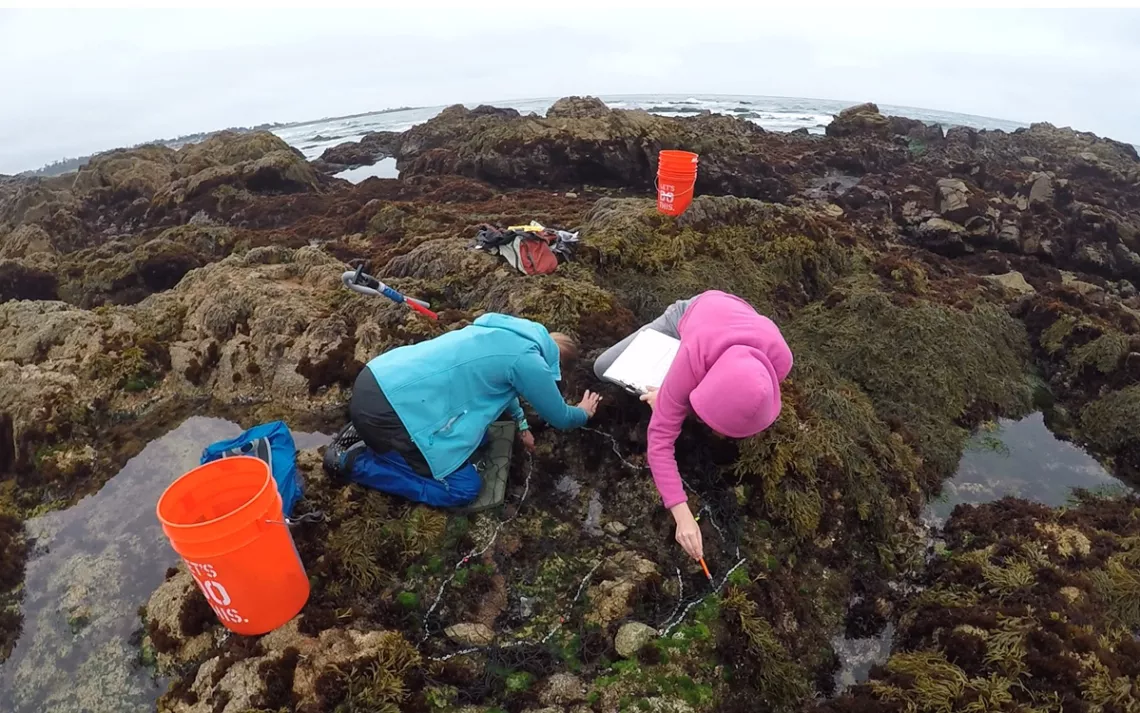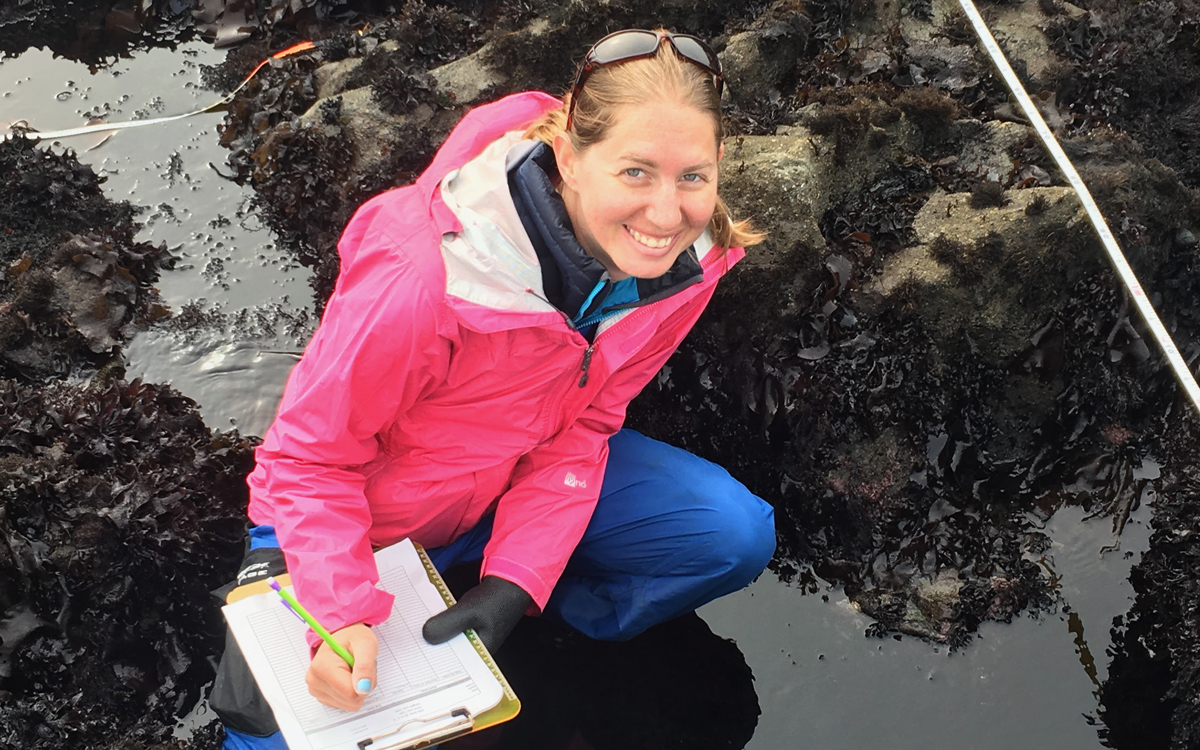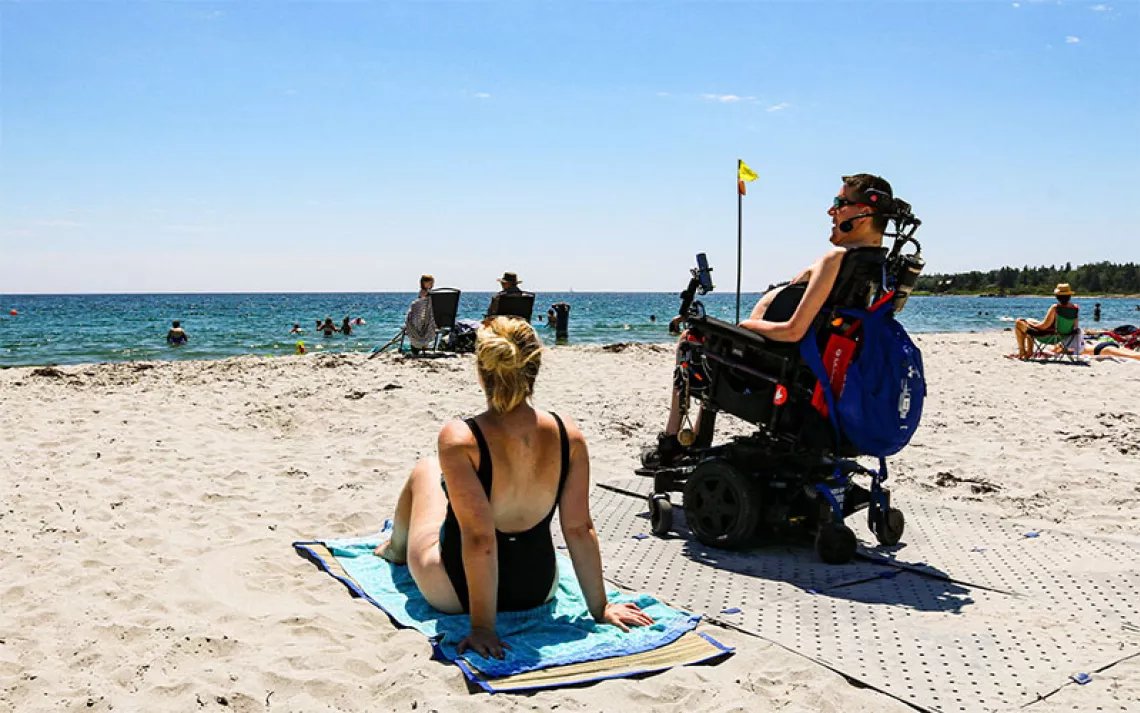Save the Seaweed
Ocean vegetation can protect shellfish, if we treat it right

Nyssa Silbiger and Piper Wallingford collecting data. | Photo courtesy of Nyssa Silbiger
Climate change is making the ocean more acidic, which is terrible news for anything that builds itself out of calcium carbonate (oysters, corals, sea urchins, to name a few) and also anything tiny and vulnerable to acidity (very young fish). But these victims have allies: seaweed and sea grasses, which lower the acidity of water. A study published this month in Scientific Reports examines how that relationship plays out along a thousand miles of Pacific coastline, from Bob Creek, Oregon, to Corona del Mar, California.
Nyssa Silbiger, the study’s lead author and a professor of biology at California State University, Northridge, chose to study tide pools because, as she puts it, “They’re the laboratories of the ocean.” Because the pools are isolated from the ocean for several hours during low tide, each one becomes a test case for how different aquatic organisms change the water around them. In tide pools, she found that the number one driver of pH levels (the higher, the less acidity) was the presence of marine plants and algae.
Silbiger collected water samples from 57 tide pools during low tide and found that there was a great deal of variation between pools. In one that Silbiger sampled in Oregon during low tide, the pH of the pools rose by two units in six hours. That’s enough to possibly provide local refuge for creatures that would otherwise struggle to rebuild their shells faster than the ocean can dissolve them. The acidity of the overall ocean—which has dropped from 8.2 to about 8.1 since the industrial revolution—is expected to lower further by .2 units by the end of this century.
If traveling up and down the Pacific coast studying tide pools sounds like the best kind of scientific excursion, that’s because it is. Silbiger, a postdoc at UC Irvine when she began the study, had received a tip that GoWesty, a Southern California–based camper van supplier, sometimes loaned vans out to traveling musicians. She joined forces with Piper Wallingford, a UC Irvine PhD student who was studying how climate change was affecting predator-prey interactions, and drafted a letter. “We just wrote to them out of the blue,” Silbiger says. “We said, ‘We’re women in the sciences, studying climate change.’ And they donated a camper to us for two months to complete our research.” The two nicknamed the 2002 VW Eurovan “The Biology Bus.”
“It was one of the best trips I’ve ever been on,” Silbiger says. “Driving up Highway 1 . . . going out at low tides during the day and night, collecting samples . . . working as each other's field assistants . . .”

Silbiger out in the field. | Photo courtesy of Nyssa Silbiger
Silbiger grew up in South Florida and studied biology at Florida State University before getting swept up in scientific research. “Climate change is the most devastating environmental problem of our time,” she says. “I knew that I had to do something about it.”
While Silbiger was doing research for her master's thesis in Key Largo, her mom came out to visit and the two went scuba diving in the area. Her mother was an experienced diver but hadn’t visited the reef in decades, and she was horrified to see what it had become: The subject of Silbiger’s research was, to her mother, a tragic and degraded ecosystem. Even as a scientist who knew that climate change (as well as construction, overfishing, and an enormous sea urchin die-off in the 1980s) was altering coral reef ecology, Silbiger still hadn’t realized how much the world around her had changed.
Seaweed alone is not going to save us from climate change, even if it can help oysters in the short term. Several of the tide pools that Silbiger sampled, like the ones in Corona del Mar and Orange County, showed barely any shift in pH levels at low tide. These pools were also the ones with the least vegetation. This may have had something to do with how they were also located close to residential areas and saw the most foot traffic. Rising ocean levels are one reason to discourage new coastal development—the protection and restoration of ocean plants doing the hard work of keeping coastal waters nice and basic could be another one.
Coastal waters only make up a small fraction of the ocean, but they are home to a disproportionate amount of the plants that make up the very base of the food web (a.k.a. marine primary production) and an even larger percentage of the fish that we’ve come to depend on eating. Because the majority of the world’s population lives within 60 miles of a coastline, efforts such as reducing agricultural runoff and erosion and restoring kelp forests are powerful ways to protect local food webs from the effects of climate change.
When it comes to climate change, Silbiger says, “the most important thing we have to do is stop putting CO2 into the atmosphere. But marine algae and vegetation have a huge impact on coastal ecosystems. If we lose kelp forest and sea-grass beds, we're actually changing the environment. If you lose those communities, you lose those benefits.”
 The Magazine of The Sierra Club
The Magazine of The Sierra Club



